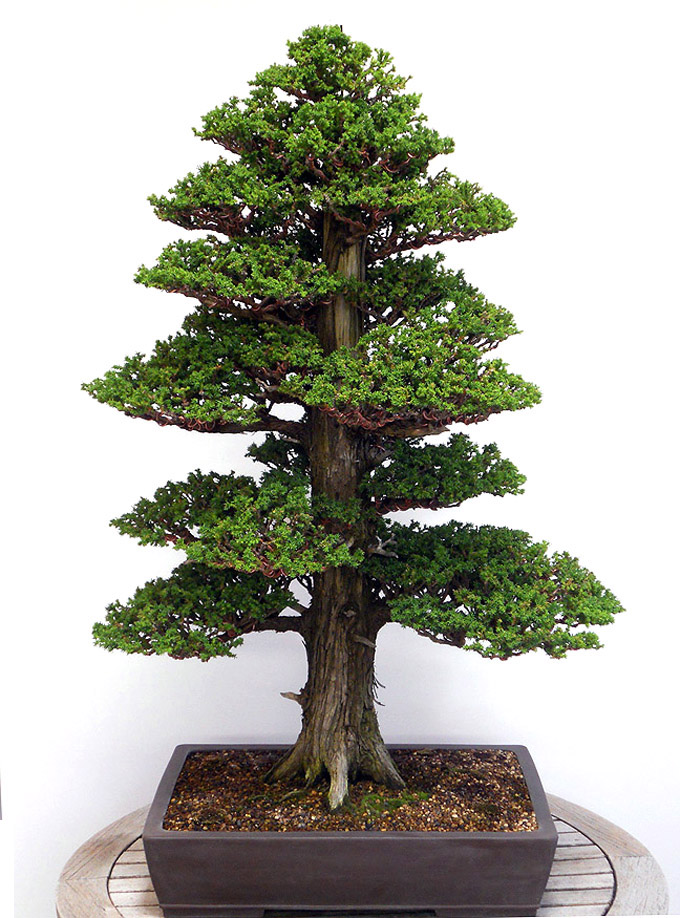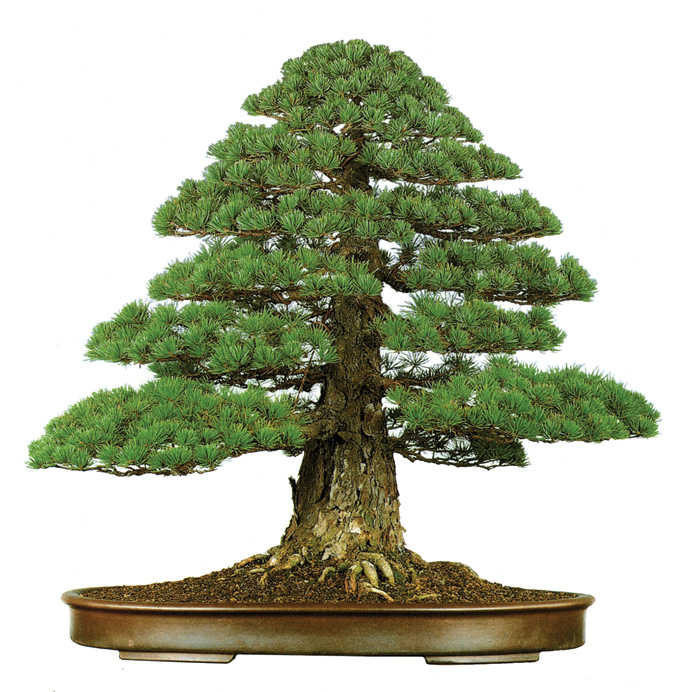 This Cryptomeria japonica is reminiscent of the unimaginably vast and towering Giant sequoias in California’s Sierra Nevada. This effect could be enhanced by photographing it from a little lower (see the photo below), but you still get the drift.
This Cryptomeria japonica is reminiscent of the unimaginably vast and towering Giant sequoias in California’s Sierra Nevada. This effect could be enhanced by photographing it from a little lower (see the photo below), but you still get the drift.
Still on a vacation of sorts, so we’ll continue our archival adventures. This one was originally titled Quiet Dignity (July, 2011).
Far and few between What a great tree. It’s from Michael Hagedorn’s Crataegus Bonsai. You seldom see a real good formal upright bonsai (you don’t see very many formal uprights at all) and you don’t see many good Cryptomeria bonsai either. Especially in the West; they are more common in Japan (their common name in English is Japanese cedar, even though they’re not really cedars; they are from Japan however).
In Michael’s own words “This cryptomeria was one of the standout trees in Boon’s backyard when I studied with him ten years ago. He’s been maintaining it for years. It was originally styled by Mitsuya during one of his visits to the states in the early ’90?s, and is the most significant cryptomeria I’ve seen in the United States. It’s about a meter tall, and has been developing as a bonsai for about twenty years….” For the whole story, visit Crataegus Bonsai.  Another dignified formal upright. The one is a legendary Japanese white pine (perhaps the most famous formal upright bonsai in the world). If was restyled by Masahiko Kimura (The Magician) just before this photo was taken in 1997. It appears in our book: Pines, Growing and Styling Japanese Black and White Pines (available at Stone Lantern).
Another dignified formal upright. The one is a legendary Japanese white pine (perhaps the most famous formal upright bonsai in the world). If was restyled by Masahiko Kimura (The Magician) just before this photo was taken in 1997. It appears in our book: Pines, Growing and Styling Japanese Black and White Pines (available at Stone Lantern).
20% to 25% off everything. This is a particularly good time to visit Stone Lantern. Sale ends January 31, 2014.
There are hundreds of enormous Tsugi (Cryptomeria japonica) in my village, and one 5 minutes from here that will leave you speechless, yet they don’t ever look like the bonsai versuon except in the first 100 years. Then they extend their branches and form great horizontal cloud- like forms.
Nice beatiful